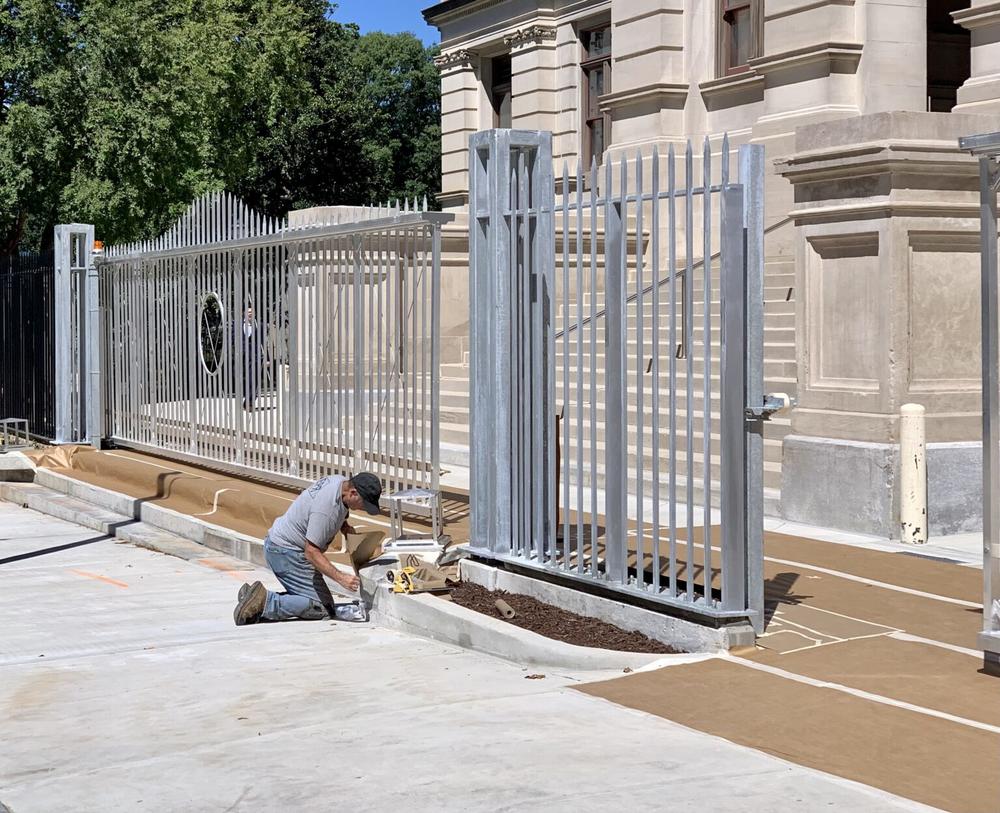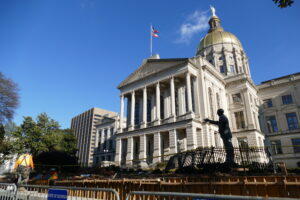
Caption
The Georgia Building Authority has been wrapping up the installation of the 8-foot tall security fence and gates surrounding the Georgia state Capitol. The fence project is on track to be completed by early October.
Credit: Stanley Dunlap/Georgia Recorder


